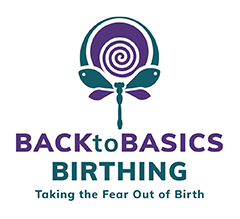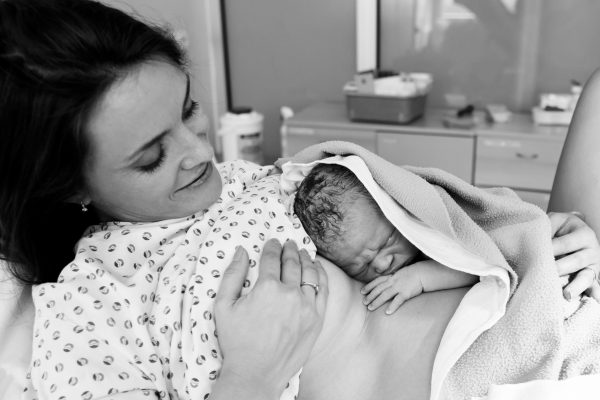Contact Vicki
If you have any questions or would just like more information please don't hesitate to get in touch by clicking the button below and filling out the contact form.
Contact Vicki

For the most part, I feel so positive about the new VBAC guidelines just released by ACOG this month (ACOG Practice Bulletin #184) and wanted to share a few highlights that potential VBAC women can really push for with their own care providers here in Australia.
We seem to be so far behind in Australia, so it is up to the consumer to do their research and present it to their caregivers.
Even though we have our own RANZCOG – Birth-after-previous-Caesarean-Section, I now tend to refer my clients more to the ACOG Guidelines as I hadn’t realised until recently when a VBAC supportive Obstetrician that I’ve been liaising with brought to my attention that the RANZCOG guidelines are “consensus-based” meaning they are “opinion-based” rather than a strong level of evidence, whereas the ACOG Guidelines highlight what level of evidence they are based on.
For example:
Level A evidence means there is strong evidence supporting that recommendation.
Level B means that there is good evidence supporting the recommendation.
Level C means there is no evidence supporting the recommendation and is based on consensus or expert opinions.
It was interesting on the very first page I read of the guidelines it mentions that “concerns over liability have a major impact on the willingness of physicians and healthcare institutions to offer trial of labour.”
In the ACOG guidelines they state that no randomized trials exist comparing maternal or neonatal outcomes between women attempting a “trial of labour after caesarean” (TOLAC) and those undergoing a “repeat caesarean delivery.”
They also state that “VBAC is associated with fewer complications than elective repeat caesareans, whereas a failed TOLAC is associated with more complications.”
There was a 60% – 80% success rate of women attempting TOLAC, however there was consistent evidence to show that women who had induction or augmentation of labour were less likely to achieve a VBAC than those who went into spontaneous labour.
They also state that if it was predicted a woman had a less than 70% chance of a successful VBAC this didn’t mean that she should be excluded from having a trial of labour.
I was really pleased that ACOG have stated that “there is no prediction model for VBAC that has shown to result in improved patient outcomes,” but they were clear to add that women who achieve a VBAC avoid major abdominal surgery and have lower rates of haemorrhage, thromboembolism and infection, while also having shorter recovery periods than those who have a repeat caesarean.
They repeated what was in the previous guidelines “the preponderance of evidence suggests that most women with one previous caesarean delivery with a low-transverse incision are candidates for and should be counselled about and offered TOLAC. Conversely, those at high risk of uterine rupture (e.g. those with a previous classical or T-incision, prior uterine rupture, or extensive transfundal uterine surgery) and those in whom vaginal delivery is otherwise contraindicated (e.g., those with placenta previa) are not generally candidates for planned TOLAC.”
It made sense that they included “the balance of risks and benefits appropriate for one patient may be unacceptable for another.”
ACOG highlight that women who have a VBAC also reduce the consequences related to multiple caesarean deliveries such as hysterectomy, bowel and bladder injury, transfusion, infection and problems with the placenta through placenta praevia and accreta.
In my opinion the five key areas that I am asked about the most and women fear most or are misled about when attempting a VBAC are:
I’ll break down some of the ACOG guidelines on those five key areas.
It was clearly highlighted in these guidelines that due to uterine rupture and asymptomatic scar dehiscence being grouped together in earlier studies, this then created a varying result in true rupture, and many earlier studies did not break down rupture rates by scar type or whether a woman was induced or augmented.
ACOG stated that “for women with a prior low-transverse uterine incision it was clinically determined uterine rupture rate after TOLAC of approximately 0.5% – 0.9%.”
Induction of labour was also an option for VBAC women, however ACOG states that the increased risk of uterine rupture and decrease in success was something that women should consider.
The uterine rupture rates were shown from one large study (20,095 participants) for women who had had one previous caesarean as 0.52% for spontaneous labour, 0.77% for labour induced without prostaglandins and 2.24% for labour induced with prostaglandins.
Clearly the risk of uterine rupture is still under 1% – therefore rare (except in the case of the use of prostaglandins).
What this means is that you have more than 99% chance of not rupturing.
Another large study with 33,699 women showed that augmentation or induction of labour was associated with an increased risk of uterine rupture when compared with spontaneous labour. These results were 1.4% induction with prostaglandins (with or without oxytocin), 1.1% for oxytocin alone, 0.9% for augmented labour and 0.4% for spontaneous labour.
This study also showed that uterine rupture was no more likely to occur when labour was induced with an unfavourable cervix than when labour was induced with a favourable cervix.
Interestingly, ACOG state that many of the studies done on the effects of prostaglandins on uterine rupture in women with a prior caesarean delivery have demonstrated inconsistent results.
ACOG advise that there are no accurate antenatal predictors of uterine rupture that have been identified.
It is no surprise that ACOG recommends continuous electronic foetal monitoring (EFM) as they state that in up to 70% of cases the most common sign of uterine rupture was fetal heart rate abnormality.
They also mention that there is no evidence to suggest that intrauterine pressure catheters or fetal scalp electrodes are superior to external forms of continuous monitoring and that there is evidence that the use of intrauterine pressure catheters does not help in the diagnosis of uterine rupture.
It is so important to recognise that every women and pregnancy is unique, so signs and symptoms can be variable, however ACOG lists other common signs and symptoms as:
This is one area that I felt a little disappointed as in ACOG’s “Safe Prevention of the Primary Cesarean Delivery” it states “Suspected fetal macrosomia is not an indication for delivery and rarely is an indication for cesarean delivery. To avoid potential birth trauma, the College recommends that cesarean delivery be limited to estimated fetal weights of at least 5,000g in women without diabetes and at least 4,500g in women with diabetes (Table 3) (99). This recommendation is based on estimations of the number needed to treat from a study that modeled the potential risks and benefits from a scheduled, nonmedically indicated cesarean delivery for suspected fetal macrosomia, including shoulder dystocia’s and permanent brachial plexus injuries (100). The prevalence of birth weight of 5,000g or more is rare, and patients should be counselled that estimates of fetal weight, particularly late in gestation, are imprecise (Table 3). Even when these thresholds are not reached, screening ultrasonography performed late in pregnancy has been associated with the unintended consequence of increased cesarean delivery with no evidence of neonatal benefit (101). Thus, ultrasonography for estimated fetal weight in the third trimester should be used sparingly and with clear indications.”
However, with VBAC women these new guidelines state: “Women attempting TOLAC who have macrosomic fetuses (historically defined as a birth weight greater than 4000g or 4500g) have a lower likelihood of VBAC than women attempting TOLAC who have non-macrosomic fetuses. However, studies examining the incidence of uterine rupture during TOLAC with neonatal birth weights greater than 4000g have shown mixed results.”
In other words, they have reduced the birth weight to 4000g – 4500g for suspected macrosomic babies in VBAC women. However, they have also stipulated that “suspected macrosomia alone should not preclude offering TOLAC.”
What was important to note though, was that previous studies have used “actual” birth weights as opposed to “estimated” fetal weights, limiting the applicability of the data for antenatal decision-making. In the “Safe Prevention of the Primary Cesarean Delivery” excerpt (as shown above) they clearly state, “patients should be counselled that estimates of fetal weight, particularly late in gestation, are imprecise (Table 3).”
What this means is that scans and palpation cannot accurately predict birth weight during pregnancy, so caregivers should stop scaring women into being induced early or in having a repeat cesarean due to “big baby” but women should instead be supported on an individual basis to have a TOLAC.
There have been studies demonstrating that the longer a woman goes over 40 weeks her chances of a successful VBAC were decreased, but ACOG recognised that there was no evidence to support that going past 40 weeks increased the risk of uterine rupture therefore it was not recommended that women going past 40 weeks should be prevented from a TOLAC.
Studies have reported a uterine rupture risk of 0.9% and 3.7% but there were no consistent conclusions on how this risk compares with women with only one prior uterine incision.
It was reported that there was some increased risk in morbidity in women with more than one caesarean delivery, although this was still considered small (e.g. 2.1% versus 3.2% in one study).
So given the lack of research, ACOG stated that it is reasonable to consider women with two previous low-transverse cesarean deliveries to be offered TOLAC.
We all know how frustrating the measure of BMI is and it seems to cause more problems than most, but studies have shown a decrease in the likelihood of a successful VBAC with a BMI greater than 40.
However, according to the study 61% of morbidly obese women still had a successful VBAC compared to 85% of women with a normal weight (BMI of 18.5 – 24.9).
ACOG again states that a high BMI alone should not be considered a contraindication for VBAC, and those women should have individual care as the risks of complications with a repeat cesarean were higher than a TOLAC.
Not being very politically correct but just stating a fact – “Fat women can give birth vaginally!”
The other point I found interesting in the new ACOG guidelines is that they state that a TOLAC should be attempted at facilities capable of performing emergency deliveries.
Previously, this had been taken out of context and in the US many hospitals banned VBAC because they misinterpreted this to mean that they needed to have a physician and anaesthetist on call 24/7, which was incorrect.
The intention of ACOG Guidelines has never been to restrict access to VBAC, but sometimes the barrier is the misinterpretation of the guidelines by hospital administrators and staff.
Something to keep in mind though, when women are told that they cannot have a VBAC at a hospital because they are not equipped to handle an emergency, then women need to ask those care providers how they would handle emergencies such as cord prolapse, placental abruption and shoulder dystocia in women not attempting a VBAC because those incidences rate higher in non-VBAC women than uterine rupture in VBAC women.
Here is a great comparison by Komorowski, (2010)
Uterine Rupture………………… 7-8 out of 1000 VBAC attempts
Placenta Abruption……………. 11-13 out of 1000 labours
Cord Prolapse………………….. 14-62 out of 1000 labours
Shoulder Dystocia…………….. 6-14 out of 1000 labours
So, I am really pleased that these new 2017 ACOG Guidelines are really giving women more information about VBAC, debunking some of the myths surrounding VBAC and hopefully giving women more confidence and knowledge, but also the desire to research more to improve their chance of success.
If you would like more information, my VBAC Focus classes please check out my website:
If you have any questions or would just like more information please don't hesitate to get in touch by clicking the button below and filling out the contact form.
Contact Vicki